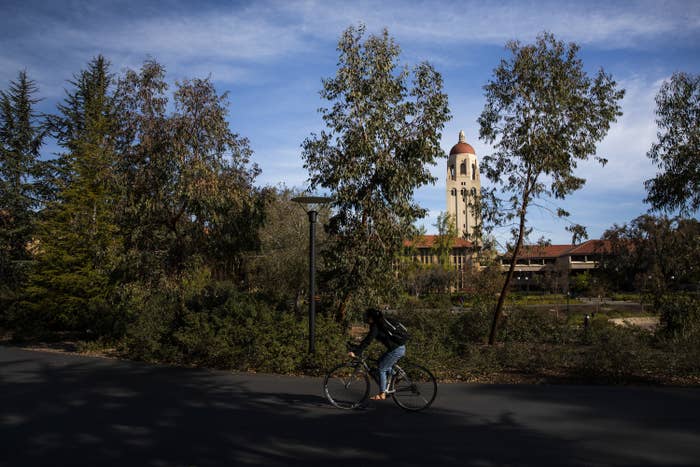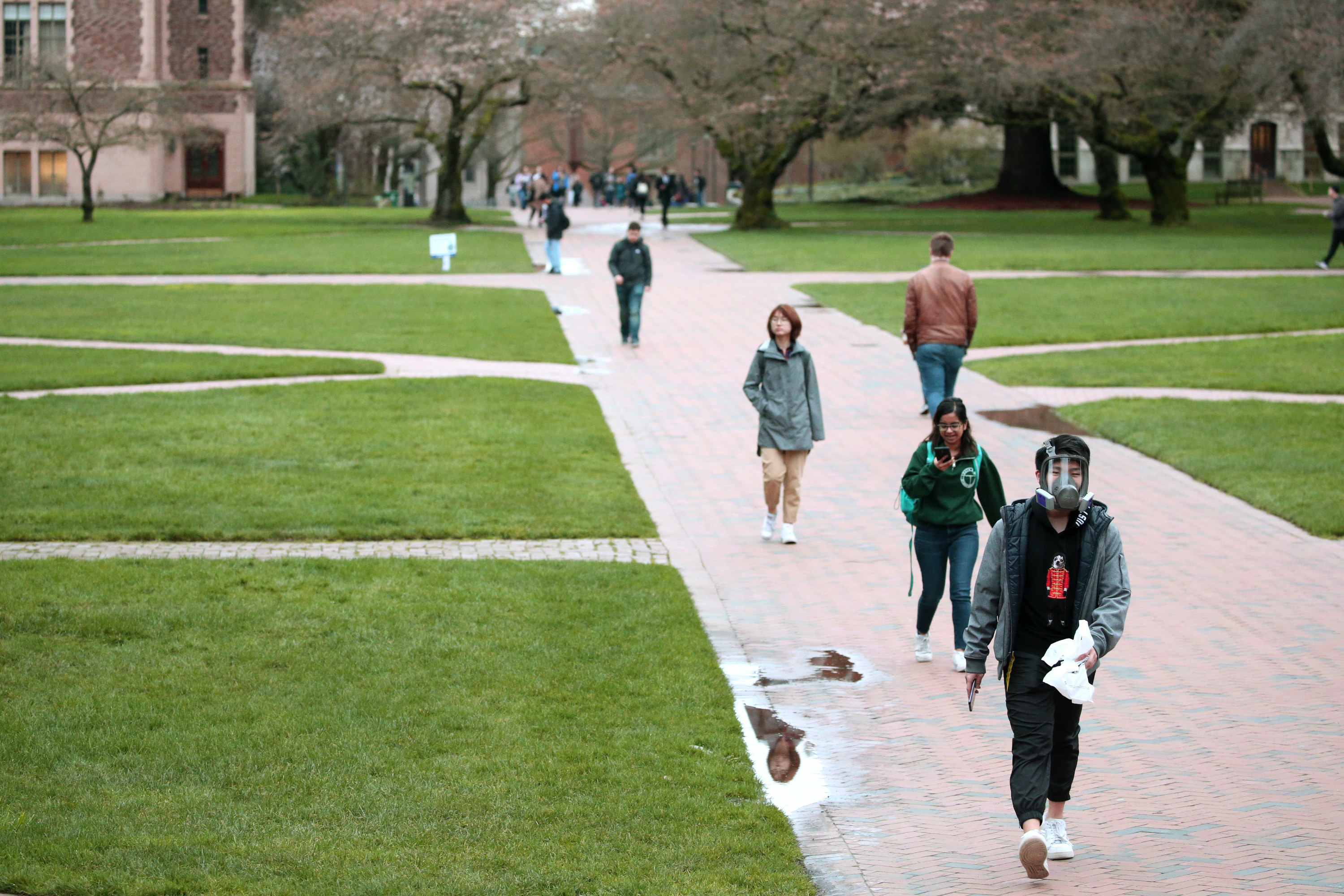
After learning Friday evening that Stanford University canceled its in-person classes starting Monday, Kathryn Benjamin Golden scrambled to figure out how to teach her Introduction to African and African American Studies course online — which she had never done before.
“I don't actually have experience preparing my own lectures through whatever [online] tools were available, so I had to learn technology is basically what I did this weekend,” Benjamin Golden, a postdoctoral fellow, told BuzzFeed News.
Within the last week, universities and colleges across the country ended in-person classes to prevent the spread of the novel coronavirus that has sickened more than 100,000 people and killed more than 4,000 worldwide.
As of Tuesday, more than 1,000 people in the US have tested positive for COVID-19, the disease caused by a novel coronavirus first identified late last year in Wuhan, China, and over two dozen have died.
The outbreak has disrupted air travel, canceled major conferences, and events, and led to quarantines of communities — and even the entire country of Italy. Now, it is forcing higher education institutions like Stanford, UC Berkeley, Harvard, MIT, and the University of Washington, where thousands to tens of thousands of students, staff, and faculty congregate on a daily basis, to upend traditional teaching practices in the name of public health.

While some faculty have already adopted online teaching, other instructors are having difficulty making the jump, especially on such short notice.
Benjamin Golden decided to record the audio for her lecture on Zoom, the video conferencing service, and upload it to the school’s online course management system Monday night for students to access on their own rather than hold a live, remote lecture at their regularly scheduled class time.
She said it didn’t seem “feasible” to hold a live class with her 37 students on Zoom.
“I know that's possible, but I'm not sure how,” she said.
Educators who have tested out online classes or who have been teaching remotely for years have found that instructors have to change the way they teach their classes.
“Certain pedagogies that might work really well in your face-to-face classroom you’re going to have to adapt for an online environment,” said Melissa Wong, an adjunct lecturer in information sciences at the University of Illinois at Urbana–Champaign.
Wong, who has been teaching online courses for nearly two decades and currently teaches all of her courses from her home in California, said she has found that breaking up the class into 10- to 15-minute chunks where she goes back and forth between lecturing and facilitating a class discussion helps keep students engaged.
“You can do amazingly great stuff, but you have to spend a little time figuring that all out,” she said. “It's going to be a learning curve, but it's also a great chance to model to our students that we can learn new technologies [and] we can take on new challenges.”
Online conferencing services like Zoom or Blackboard, allow participants to “raise hands,” share screens, message the host and other attendees, and break off into smaller discussion groups. Instructors have found that with smaller classes it’s relatively easy to have students ask questions verbally, but it’s important for everyone to use headsets or headphones in that situation to avoid feedback and echos.
Maya Lustgarten, a senior at the University of Washington, said it was a bit harder to interact with her Korean language teacher through Zoom on Monday, but the experience overall was good considering the circumstances.

“I thought compared to other actual online classes I’ve had before I think it was honestly a better situation because you can still see the teacher and there’s like a chat feature where you can communicate with them,” Lustgarten told BuzzFeed News.
Instead of adapting, some professors have chosen to cancel classes altogether.
“For two of my classes, we were just supposed to have presentations this week and they both said that they thought it was too difficult to get everyone on Zoom to,” UW sophomore Selma El-Badawi told BuzzFeed News.
El-Badawi, a history and political science major, said all four of her classes were canceled after the university announced it was ending in-person instruction Friday through March 20, when its winter quarter ends.
“I mean on one hand I’m fine with not having to present, but on the other I already kind of made my presentations,” she said. “I just kind of wish I hadn’t spent as much time on that.”
Shannon Gibson, an associate professor in political science and international relations at the University of Southern California, which is doing a three-day test of online teaching this week, said she was disappointed to hear that some faculty aren’t embracing the opportunity.
“I think it’s a combination of faculty wanting the academic freedom to teach the way that they want to teach and I think there’s also a level of technological intimidation,” Gibson told BuzzFeed News. “I think some of them are just hoping the test is all there is.”
She added that regardless of whether USC administrators decide to end in-person teaching on a more long-term basis, “I feel like we’re all sort of one earthquake away from having to do this anyways.”
“It’s a good opportunity to get on board,” Gibson said.
Although the University of Iowa has not yet moved to online-only instruction, Juan Pablo Hourcade, an associate professor in computer science at the Iowa City college, began to give students the option of attending his class online two weeks ago, so that he could figure out how to use the software in case he is forced to later.
“It’s helped me work through a few things with the software that we use with the process and it’s also helped some of the students start to figure out how to do things,” Hourcade told BuzzFeed News.
On Wednesday, the university announced it would move to online classes starting March 23.
Hourcade encouraged other faculty to test out the technology now and not wait until they have to use it.
Universities have made tutorials and training available to faculty to help them make the transition. Educators across the country, including Hourcade and Wong, have also offered their own advice in Twitter threads on how to keep students engaged and other technical tips to set up the best live broadcast.
Expect it to be a different dynamic and a learning experience for everyone. For example, if you ask a question, you may have a delay of a few seconds before you see responses, at least initially as students get used to the software. (9/10)
“You can do some things that are not going to be as good as face-to-face but at least can enable students to finish up their semester and get something that may not be 100% of what they were going to get but maybe we can get to 90%,” Hourcade said.
Still, educators acknowledged that there may be some types of classes, like chemistry labs or performing arts courses, where teaching online just won’t work.
“It's hard to reproduce,” said Bret Bennington, a professor of geology at Hofstra University in New York, referring to lab work.
Bennington said he still has a couple of weeks to figure out how he’s going to conduct his classes online when students return from spring break. He’s considering uploading a series of photographs of the rocks and fossils students would typically get to handle and observe in person.
“It's a shame to lose the immediacy of being able to handle something but the big ideas will come through,” he said.
While educators who spoke to BuzzFeed News said they understood the need to move classes online and generally welcomed the opportunity to learn how to use the technology, they hoped that classes would resume in person, as normal, soon.
“I appreciate my health being a priority, but, you know, students are missing out,” Benjamin Golden said. “I believe in human interactions and I think that that's the best way that people learn through live exchange of ideas and questions. … I think that there's power in that and that's what learning is about.”
